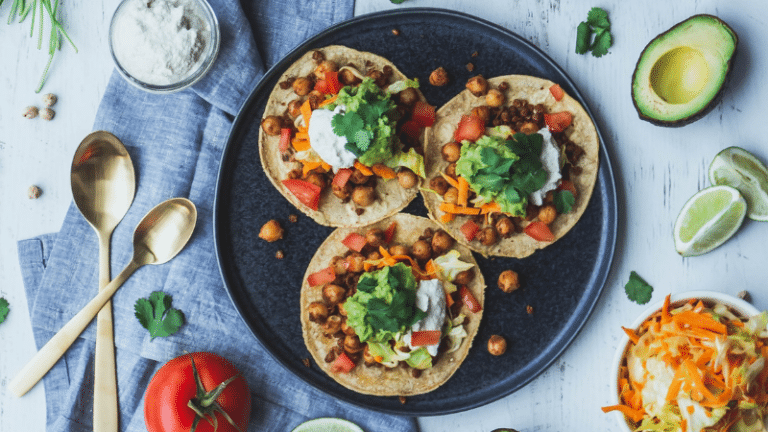23 Vitamin B1 Foods You Should Include in Your Diet in 2024

In this article, we will provide you with a list of vitamin B1 foods and elaborate on the benefits of the vitamin. Vitamin B1, also known as thiamine, belongs to the group of B vitamins. Since it is the first B vitamin that was discovered, the number 1 was assigned to it. The last vitamin in this group is B12, although the vitamin B complex includes only eight vitamins.
What Is Vitamin B1?
Thiamine is a water-soluble vitamin responsible for energy metabolism—enabling your body to transform food into energy. Another vital vitamin B1 function is the support of the nervous system. Like other water-soluble vitamins, it is stored in small quantities, so you should manage its intake through diet.
Vitamin B1 Benefits
The functioning of the heart, muscles, and nervous system depends on this vitamin. Thiamine plays a crucial role in transforming carbohydrates, fats, and protein into energy needed for vital functions. It also helps the body produce adenosine triphosphate (ATP), a molecule that transports energy within cells.
Since one of the thiamine benefits is its aid in hydrochloric acid release, it enhances digestion. Along with other B vitamins, vitamin B1 improves your body’s ability to cope with stress, which is why it’s often described as the “anti-stress” vitamin. It’s also used to enhance memory and concentration. Moreover, thiamine is necessary for keeping the liver healthy, just like vitamin C.
Thiamine Foods
Some foods, like whole grains, meat, and fish, are naturally rich in vitamin B1. What’s more, foods such as bread and cereals are usually fortified with thiamine.
Here, we will provide you with a list of valuable food sources of thiamine. Remember to include these foods in your diet since the body cannot store this water-soluble vitamin.
Note, however, that cooking foods with vitamin B1 reduces their thiamine content as heating destroys this vitamin. Also, certain dietary habits, such as drinking a lot of coffee or tea and eating lots of raw fish and shellfish, can decrease the body’s ability to use thiamine, leading to an inadequate intake of this critical nutrient.
Now, it’s high time we dove into the complete list of foods high in vitamin B1.
Trout
Rich in 3-omega fatty acids and protein, this freshwater fish is considered very healthy. It’s also one of the sources of vitamin B6, and it’s high in vitamin B1. As little as three ounces of trout cooked with dry heat will cover approximately 33% of the vitamin’s DV.
Salmon
This low-mercury fish belongs to foods rich in thiamine. Eating this fish has numerous health benefits as it is rich in vitamin D, protein, and omega-3 fatty acids. Namely, it may support brain function and promote a healthy heart. Astoundingly, one serving of cooked salmon covers about 18% of vitamin B1’s DV.
Tuna
Tuna is yet another fish that belongs to the foods that contain thiamine. A three-ounce serving of cooked with dry heat Bluefin tuna provides 17% of this vitamin’s DV. On top of being a valuable addition to vitamin B1 foods, tuna is a good source of omega-3 fatty acids, vitamin D, and selenium.
Blue Mussels
Three ounces of cooked, moist-heat blue mussels cover 25% of the vitamin’s DV. What’s more, blue mussels are also high in protein, vitamin B12, iron, phosphorus, manganese, and selenium. Also, mussels help blood vessels work properly and lower blood pressure.
Beef
Beef is one of the thiamine-rich foods. Notably, three ounces of beefsteak lands you 7% of thiamine’s DV.
If you are still wondering what foods are high in thiamine, remember that beef liver contains even more of the vitamin. Namely, one serving of this type of meat will bag you around 10% of the vitamin’s DV. Moreover, beef is known for its high iron content, and it’s an excellent source of other essential nutrients, such as vitamin B12, zinc, and selenium.
Pork
Besides beef, vitamin B1 can be found in other common meats. Thiamine concentration is even higher in pork than in beef since three ounces of bone-in, broiled pork chop cover 33% of the vitamin’s DV. This type of meat is also a great source of other B vitamins and essential minerals like selenium and zinc.
Black Beans
Black beans, also known as turtle beans and classified as legumes, are generally high in protein and fiber. They also belong to the list of thiamine-containing foods. Namely, half a cup of boiled black beans lands 27% of the vitamin’s DV. What’s more, other benefits of black beans are lowering blood pressure, maintaining healthy bones, and managing diabetes.
Sweet Potato
Vegetables are a great addition to foods with thiamine. For instance, a 3.5-ounce serving of baked sweet potato with the skin provides 7% of this vitamin’s DV. Note that sweet potatoes promote gut health, support healthy vision, and may improve brain function.
Acorn Squash
As mentioned before, many vegetables are vitamin B1 foods, and acorn squash isn’t an exception. A cup of cooked acorn squash offers 23% of thiamine’s DV. A good thing about this vegetable is that it is cholesterol-free while also rich in numerous vitamins and minerals. For example, acorn squashes are excellent sources of vitamin A and vitamin C.
Sunflower Seeds
Sunflower seeds are excellent sources of vitamin B1. Just one ounce of toasted seeds lands you 8% of this vitamin’s DV. What’s more, sunflower seeds contain other B-complex vitamins and have a high vitamin E content. Copper, manganese, and selenium are just some of the minerals these seeds contain.
Barley
Foods rich in vitamin B1 also include grains such as barley. One cup of cooked and pearled barley covers 8% of vitamin B1’s DV. Additionally, barley is an excellent source of fiber and some essential minerals like manganese and selenium.
Corn
Corn belongs to the vitamin B1 (thiamine) foods, and it’s a great source of fiber. In addition, it is rich in minerals and vitamins. Namely, one medium ear of yellow and boiled corn covers 7% of thiamine’s DV. It’s also a good source of other B-complex vitamins such as vitamin B5, B6, and B9.
Brown Rice
This whole-grain rice also belongs to foods that contain vitamin B1. Half a cup of cooked, long-grain, not enriched brown rice bags you 8% of vitamin B1’s DV. In addition, it contains other B-complex vitamins such as niacin, riboflavin, vitamin B5, and vitamin B6.
White Rice
White rice usually contains added vitamins, including vitamin B1, marking its addition to vitamin B1-rich foods. Half a cup of parboiled, long-grain, enriched white rice will provide you with an impressive 117% of the vitamin’s DV. That said, compared to brown rice, white rice contains significantly less fiber.
Oatmeal
Oatmeal is a great choice for a healthy breakfast as it has a high fiber content. It’s also rich in numerous minerals, including magnesium, zinc, and iron.
If you’re a proponent of healthy breakfast who wants to know what food has thiamine, oatmeal is right there for you to consider. Notably, half a cup of regular and quick oatmeal (enriched and cooked with water) covers 8% of the vitamin’s DV. It’s also a good source of vitamins A and B6.
Fortified Cereals
Nowadays, you can even get your hands on cereals intentionally packed with vitamin B1—thiamine. One serving of breakfast cereals fortified with 100% of the DV for vitamin B1 will cover your daily intake of the vitamin. That said, since such cereals often have a high sugar content, you might want to go for the ones that don’t contain more than 5g of sugar per serving.
Baker’s Yeast
It’s yet another valuable addition to thiamine foods. In fact, 100g of baker’s yeast provides 157% of the DV for vitamin B1. What’s more, this food has more vitamin B1 than 92% of foods. While there are many other foods containing more vitamin B1, baker’s yeast is richer in this vitamin than in any other nutrient.
Bread
Whole grains are an essential source of various nutrients, and one way to include them in your diet is to eat whole wheat bread. This is a good option since this type of bread is low in fat and cholesterol, while it can provide you with several minerals and fiber. On top of that, whole wheat bread belongs to vitamin thiamine foods. A single slice of this bread covers 8% of the DV for vitamin B1.
English Muffins
Enriched English muffins are foods rich in thiamine. One plain, enriched English muffin will cover 25% of the DV for vitamin B1. These muffins are also a good source of other B vitamins, such as riboflavin, niacin, and folate.
Macaroni
Our list of thiamine foods wouldn’t be complete without macaroni. One cup of cooked whole-wheat macaroni lands you 17% of thiamine’s DV. In addition, this type of pasta is a great source of fiber. Macaroni releases energy at a slow pace, so you don’t get energy spikes similar to those of simple sugars. Some brands of macaroni are also enriched with iron.
Egg Noodles
Egg noodles are another example of fortified food. They are good vitamin B1 food sources. What’s more, they offer many other B-complex vitamins, including folate and riboflavin. One cup of cooked, enriched egg noodles provides 42% of the DV for vitamin B1. Note that these noodles offer a broader spectrum of nutrition compared to regular pasta, with higher amounts of essential amino acids and protein.
Dairy Products
Dairy products are vitamin B1 foods sources as well. Namely, a cup of 2% milk serves 8% of the vitamin’s DV. The same DV is covered by one cup of plain, low-fat yogurt. Not only is milk one of the best sources of calcium, but it is also rich in other B vitamins, including vitamin B12 and riboflavin.
Orange Juice
When elaborating on what foods are rich in thiamine, one simply cannot omit most people’s favorite—orange juice. A cup of orange juice prepared from concentrate covers around 8% of the DV for vitamin B1. Notably, regular consumption of this juice has been linked to improved heart health, lowered inflammation, and a lower risk of kidney stones.
Thiamine Recommended Daily Intake
The Food and Nutrition Board (FNB) at the Institute of Medicine of the National Academies established the recommended dietary allowances (RDA) for all the nutrients, including thiamine. The tolerable thiamine upper limit level in these guidelines points to the maximum dose per day.
In a nutshell, the RDA is an average daily intake that should meet healthy people’s nutrient requirements. Overall, meeting these requirements shouldn’t be a problem with a number of vitamin B1 supplements and vitamin B1 foods easily accessible.
The recommended daily intake of vitamin B1 is different depending on age and sex:
- from birth to 6 months—0.2 mg
- from 7 to 12 months—0.3 mg
- from 1 to 3 years—0.5 mg
- from 4 to 8 years—0.6 mg
- from 9 to 13 years—0.9 mg
- from 14 to 18 years—1.2 mg (male) and 1.0 mg (female)
- 19+ years—1.2 mg (male) and 1.1 mg (female)
When it comes to pregnant and breastfeeding women supplementing thiamine, their daily intake should be increased. Their RDA for vitamin B1 is 1.4 mg when pregnant and 1.4 mg when breastfeeding.
Causes and Effects of Vitamin B1 Deficiency
Inadequate diets that don’t contain enough vitamin B1 can lead to thiamine deficiency. Another cause of this condition can be lower absorption or higher excretion of this vitamin due to alcoholism, AIDS, or some medications.
Vitamin B1 deficiency symptoms include:
- weight loss
- muscle weakness
- confusion
- short-term memory loss
- cardiovascular problems
Lack of thiamine may also cause more severe health conditions, such as beriberi. This disease can affect the nerves or heart, and it can even lead to death if it isn’t treated correctly.
Another possible effect of thiamine deficiency is the Wernicke-Korsakoff syndrome. People with chronic alcohol dependence are at higher risk of developing this brain disorder than the rest of the population. There is also a link between vitamin B1 and eyesight, as thiamine deficiency can cause problems with your vision as well.
Who Should Take Vitamin B1 Supplements?
Some people are more likely to develop a vitamin deficiency, and they could benefit from taking vitamin B1 supplements. Since ethanol reduces the absorption of thiamine, people with alcoholism tend to have this vitamin deficiency. Lower absorption of vitamin B1 is also common among older people.
HIV infection and diabetes may increase the risk of thiamine deficiency as well. Vitamin B1 supplements are often recommended to patients who have undergone bariatric surgery because they are prone to developing this deficiency and need an increased thiamine dose.
Fortunately, this vitamin is abundant in our food, but you might also want to consult a healthcare professional and look into the possibility of taking B1 supplements.
Vitamin B1 Side Effects
Since thiamine is water-soluble, the body stores only small amounts of it, and it eliminates any excess through urine. Therefore, overdosing on thiamine is pretty rare.
Although there isn’t any evidence indicating that vitamin B1 can be toxic, the FNB warns that high thiamine intakes may have some adverse effects, so make sure you are cautious of how much vitamin B1 you take.
All in all, it’s highly recommended that you consult your healthcare provider first to determine if increasing the intake is necessary and, if it is, learn how to proceed with changing your diet or supplementation.
Conclusion
Thiamine function is key to our health since it plays a major role in metabolic processes. This vitamin enables the proper functioning of many organs and systems, including the heart and the nervous system. Low thiamine intakes can lead to various medical problems, some of which can even be life-threatening.
A balanced diet, foods containing thiamine, and vitamin B1 supplements can provide us with sufficient amounts of this vitamin. It’s good to know that we can hardly overdose on thiamine, but it’s always recommended to be cautious of how much of the vitamin we are supplying ourselves with.
Now that you are familiar with the vitamin B1 function and sources of this valuable nutrient, we hope that you have an idea or two of how you could increase the intake of thiamine.
FAQs
What does vitamin B1 do to the body?
Thiamine has an essential role in glucose metabolism, meaning that it helps in the production of energy necessary for normal physiological functioning. Moreover, it enables the heart and muscles to work properly and prevents memory loss and nerve inflammation.
What are the symptoms of vitamin B1 deficiency?
Insufficient intakes of thiamine can result in a number of health problems. Some of the symptoms indicating low levels of vitamin B1 are irritability, poor memory, fatigue, muscle atrophy, and stomach problems. Thiamine deficiency may lead to serious medical conditions, including beriberi and Wernicke-Korsakoff syndrome.
What are the side effects of too much vitamin B1?
Being a water-soluble vitamin, thiamine is not stored in the body in large quantities. Since it is excreted in the urine, it’s highly unlikely to overdose on this vitamin. However, taking high doses of thiamine is not recommended as adverse side effects are always possible.
In general, the symptoms of vitamin toxicity include nerve damage, hair loss, nausea, rashes, and gastrointestinal problems, such as diarrhea and constipation.
How much B1 do you need a day?
Daily intake of thiamine depends on your age and sex. Now, here is how much thiamine to take per day—men older than 19 years should take 1.2 mg a day, while women older than 19 years need 1.1 mg a day. Note that during pregnancy and when breastfeeding, women should increase their daily intake to 1.4 mg.
Thankfully, these days we can source most nutrients, including vitamin B1, from foods. On top of that, we can always turn to vitamin B1 supplements if need be. As always, our team urges you to consult a healthcare professional before taking any supplements.
Where can vitamin B1 be found?
The vitamin can be found in beef, pork, nuts, seeds, and yeast. There are also some fruits and vegetables containing this vitamin, such as oranges, legumes, cauliflower, kale, and peas. Vitamin B1 is usually added to certain types of foods, including bread, pasta, rice, and cereals.
Do bananas have thiamine?
Yes, bananas contain thiamine, and they are, in fact, good sources of it, too. Namely, one medium-sized banana covers 3% of the DV for vitamin B1. Overall, this fruit is valuable for vitamin B complex supplementation as one middle-sized banana also offers 5% of the DV for vitamin B3, 7% of the DV for vitamin B2, 8% of the DV for vitamin B5, and an impressive 33% of the DV for vitamin B6.
What fruits contain vitamin B?
Some of the fruits with the highest vitamin B levels are citrus fruits (oranges, lemons, clementines) and avocados. In fact, citrus fruits are also rich in folate, riboflavin, niacin, pantothenic acid, and pyridoxine. And a cup of avocado contains around 30% of the DV for folate (vitamin B9).
What vegetables have vitamin B1 in them?
The top five vegetables according to their vitamin B1 content are kidney bean sprouts, soybean sprouts, green peas, peas, and acorn squash. Other veggies that are rich in thiamine include asparagus, kale, cauliflower, and potatoes. Most legumes are good sources of thiamine as well.
All these vitamin B1 foods should definitely find their way to your plate, especially if you are a vegan, as the veggies high in thiamine can make up for some of the nutrients usually found in meat and fish.






